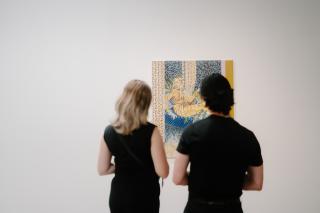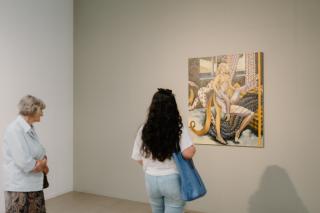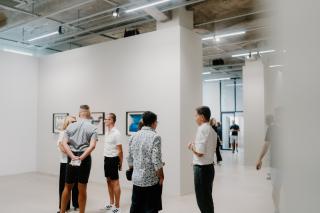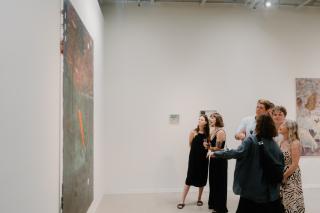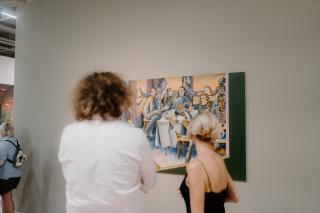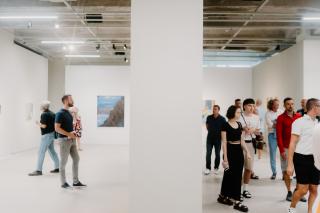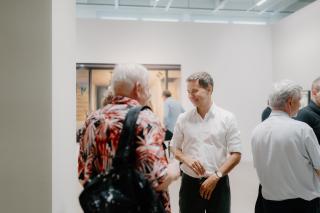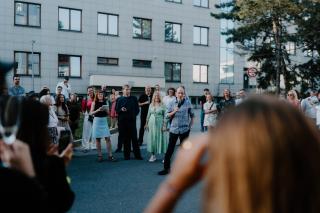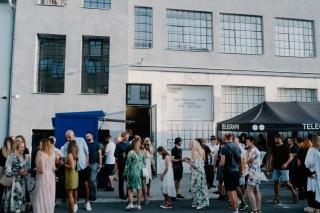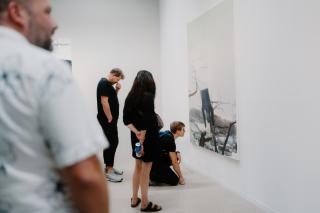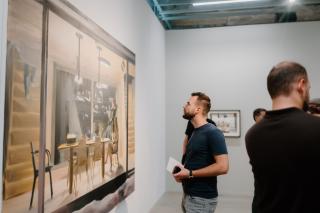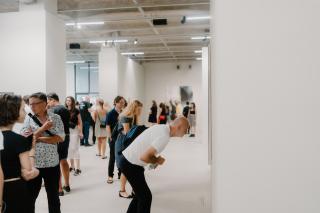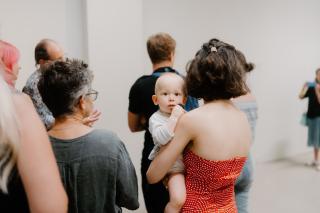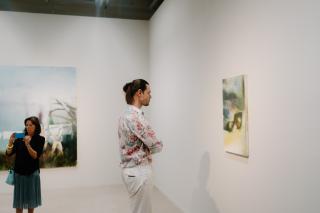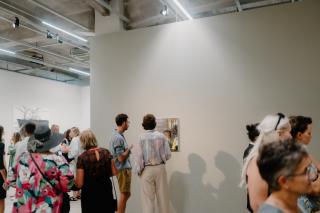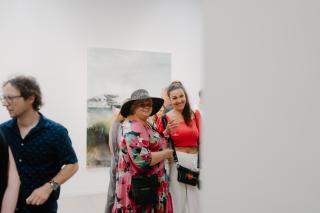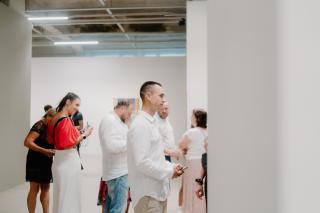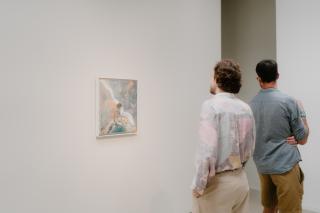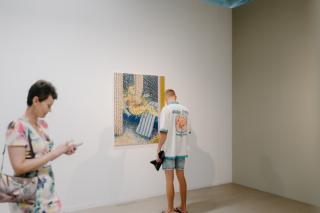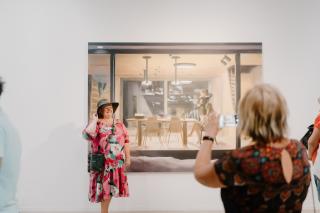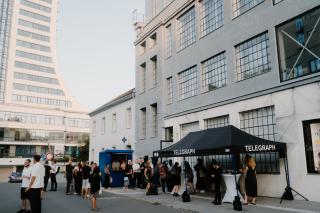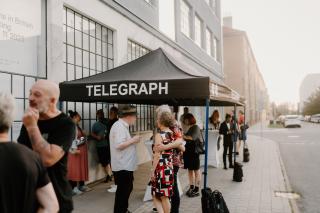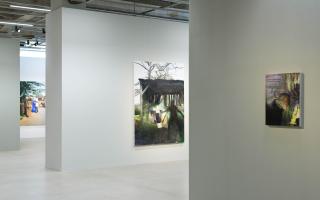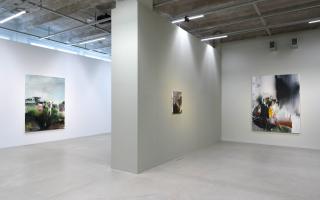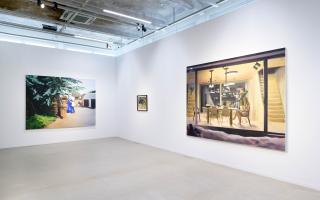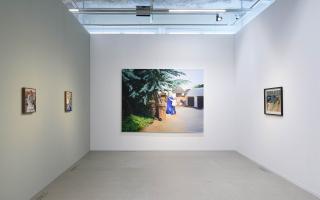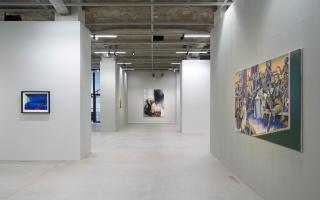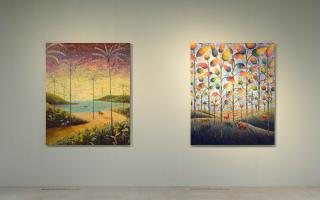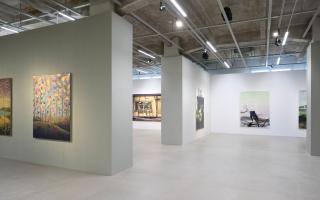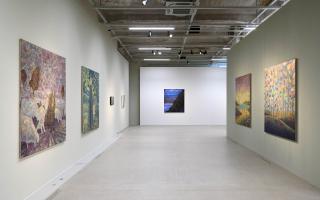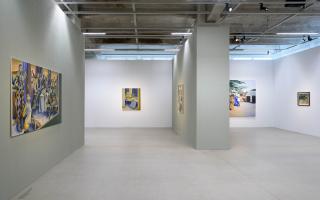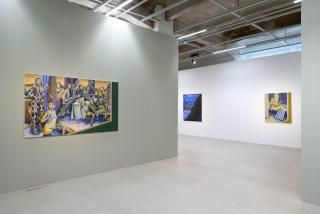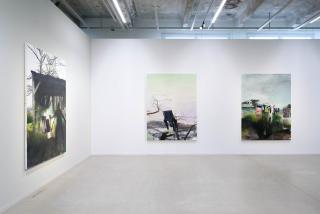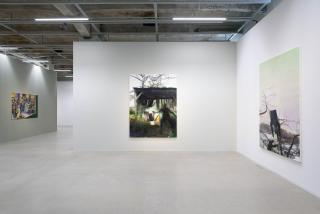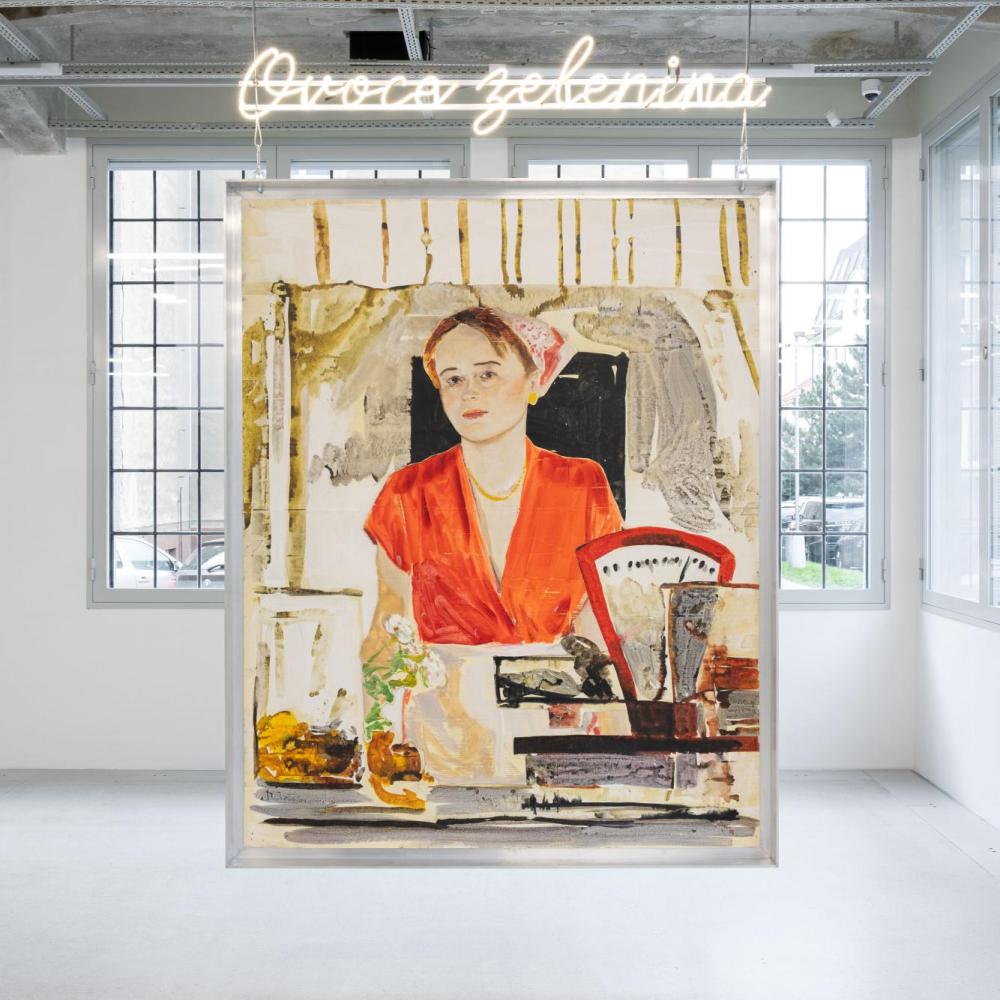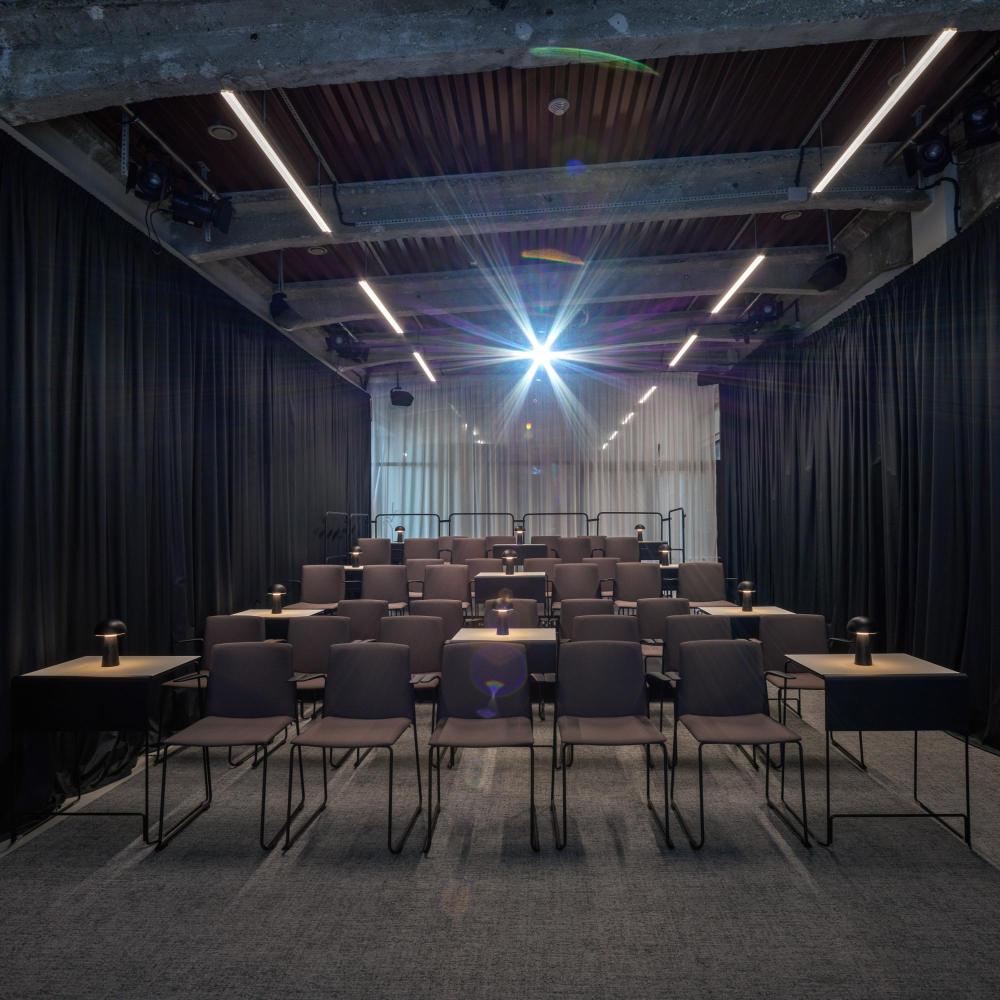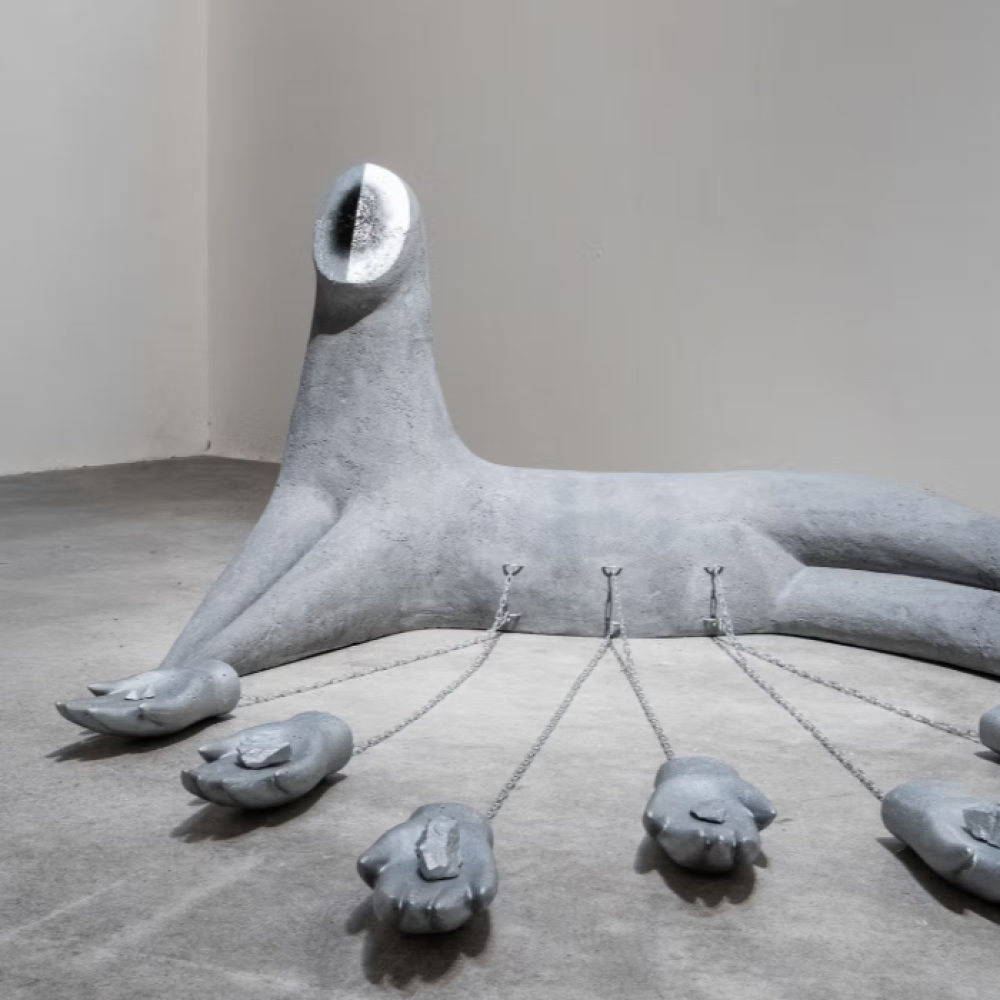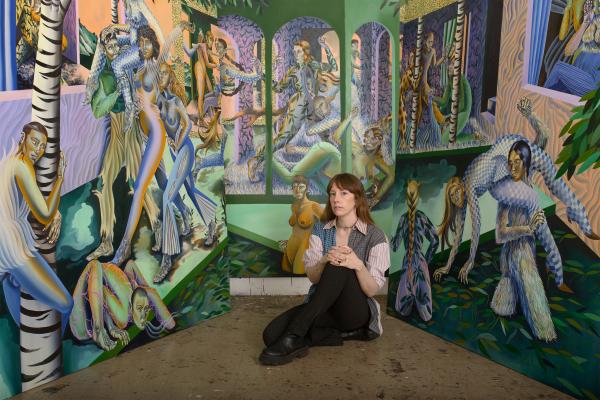
Jessie Makinson (1985) lives and works in London. She studied painting and drawing at Edinburgh College of Art and then went on to study at the Royal Academy of Drawing in London. This British painter has had a number of both monographic and group exhibitions around the world. Her work is characterised by its portrayal of the female body, particularly visually, often influenced by the art of cultures dominated by a connection with nature and the influence of mysticism.
The concept of women and the female body is fundamental to Jessie Makinson. By referring to mythology in her paintings, she seems to evoke the memory of original female archetypes and matriarchal society. In doing so, she pays homage to the modern and contemporary feminist movement in art and reshapes it in her own image. She often underlines the portrayal of strong women by the presence of science fiction and supernatural elements. The artist herself then refers to the strong narrative element in her works - an element that allows viewers to immerse themselves in Jessie Makinson's world and find their own meanings within it.
An article on the Artsy website describing your work, says that you follow your intuition rather than having an image scene thought out in advance. However, your work seems very balanced and thoughtful compositionally. So how exactly does your creative process work?
I'm not sure how true that is anymore. I think the amount of planning varies from painting to painting. I sometimes work with an abstract random underpainting that informs the composition, in combination with sketches from my imagination and drawings of historical prints and etchings from the 1600s to 1800s. Typically everyday scenes of a satirical or informative nature. Things get planned out in a linear way. So, I would know for example how many figures are in the room but not what they are doing or where they are looking. The patterns, colours, and textures are all decided as I make the painting.
Your works often have an almost mythological character – it seems to me that you are returning to a world of “originality”, a world that has not yet been influenced by globalisation. Is that true? Where do you find your inspiration?
I am interested more in folklore than mythology. Greek mythology for example has more of a patriarchal tone in some ways. With folklore, there is no right or wrong, the stories travel almost of their own accord and have variations all over the world. Often, they tell of worlds turned on their heads with tricksters, pranksters, and nonsense woven through. I am often influenced by literature. And love books that set the scene. In Italo Calvino's Castle of Crossed Destinies, travellers travel through a forest to a castle where they lose the power of speech. They gather in the great hall to tell the story of how they reached the castle through tarot cards, which interlink as their paths through the forest did. I am influenced also by sci-fi and fantasy, so the paintings are other-worldly.
You often depict female figures in your paintings. I can't help but see these figures as the archetype of the female leader. All of your work screams to me the idea of matriarchy and female power. Is that the intention?
The figures in the paintings are mainly female, but not always, sometimes the figures are more ambiguous, or are half animal, half plant, half carpet. I'm interested in flexibility between the figures, nature, and their environments. A kind of post-humanist worldview. The women are centered of course and hold power. For me my intentions are not to paint matriarchal paintings, I don't find the figures to be holding judgements or have any sense of right or wrong.
Do you consider yourself an author working with feminist ideas?
Yes.
Your name is often associated with the term surrealism. Do you identify yourself with that label?
I don't mind the association and admire many of the female surrealists before me. I think that I come to the paintings with a sense of the absurd and evasiveness and mischief which results in the surreal.
I read in one of my interviews with you that you like to play with the titles of your works – that you seduce the viewer in a certain way. Is language important to you in connection with art? Do your paintings contain a story?
Yeah, the titles must have some sort of association with the painting. And sometimes I like to troll the painting with a title. Titles are important to me as a means of adding yet another layer of meaning to the work. My paintings contain multiple stories but tend not to have one directed by me. I work intuitively to bring things together that hint towards and away from stories.
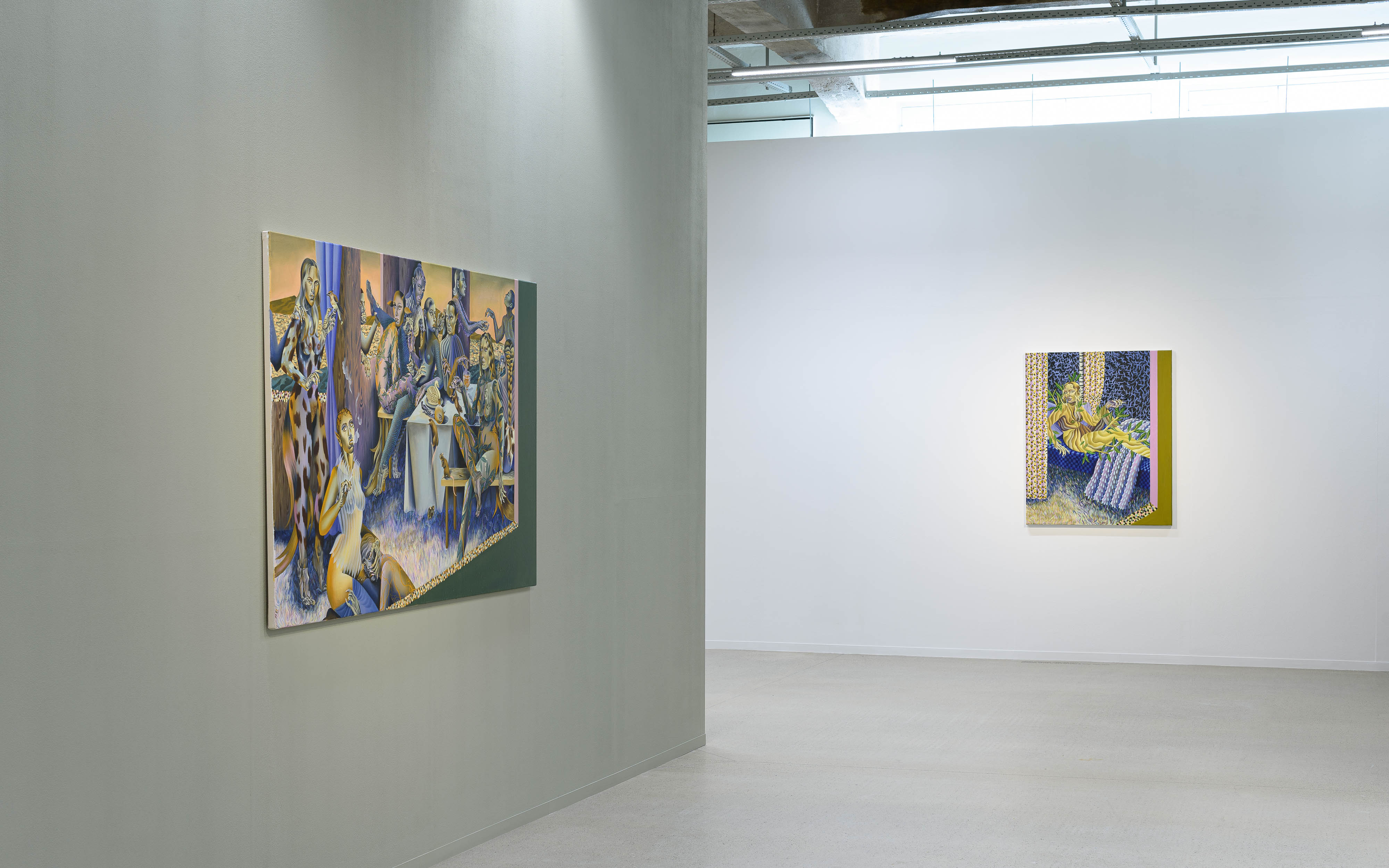
In addition to the puns in the titles of your paintings, I am increasingly noticing certain puns in the paintings themselves – for example, puns with perspective. Is breaking the rules essential for you?
I suppose I like to break the rules I set for myself in my paintings. I often have a personal logic for something that I then upend or disrupt. Like when grass suddenly becomes a figure body or when clothes can be breathed on and off. With perspective, I just don't really care that much about it. The logic of the painting and its world is more important than single point perspective. Which often gets in the way of storytelling. As David Hockney points out so well in his film about Chinese scroll painting pre-Western perspective reaching China.
And how did you get into painting in general?
I've always been painting really.
I know you don't just focus on painting – drawing or installation is also an interest of yours. What do you think about each medium? Do you choose a given medium based on the theme you want to express?
I'm interested in different entrance points, and how imagery transforms itself across different surfaces and mediums. With my current show, Bad Sleeper at Lyles & King, I've made my biggest installation so far with the four different rooms leading into each other. I wanted to make a space for the paintings themselves, where they would like to be, rather than for the viewer. Almost as if I was making their ideal world for them.
I want to ask a question that I ask all five artists currently exhibiting at the Telegraph Gallery. Why the figure? What does figurative painting mean to you?
I just need the figure, it might sound weird, but my focus isn't really the figure itself when I'm painting. It's the relationship between spaces and forms and the tiny shifts of colour and pattern across the surface.
What's next for Jessie Makinson?
I have just opened a big show at Lyles & King in New York and am working towards a show with Spurs Gallery in Beijing next year.
My last question goes into not so serious waters – I can't help it, but as I belong to a generation that is heavily influenced by fantasy worlds in the form of books, TV shows, and films, I always have to think of a certain type of supernatural when I look at your paintings. I'm sure I'm not the only one. Are you influenced by a similar cultural phenomenon?
Yes, I'm very influenced by books and fantasy. Currently, I’m influenced by Tyll by Daniel Kehlmann, The Governesses by Anne Serre, Frankenstein's Monster by Mary Shelley, The Books of Jacob by Olga Tokarczuk, and The Robot by Adam Wisniewski-Snerg.
Photo: Nick Paton
